The growing focus on ESG criteria, sustainability, and reporting has meant that companies must meet strict non-financial reporting standards, particularly concerning the three pillars: Environmental (E), Social (S), and Governance (G). However, companies often face challenges in identifying, organising, and consolidating the necessary information to comply with these standards. This process can reveal significant gaps in the available data, which are addressed through a gap analysis.
What is Gap Analysis?
Gap analysis is a fundamental compliance management tool that evaluates the differences between the information a company has and the information required by a specific standard or regulation. It allows organisations to identify gaps between their current state and the compliance goals set by regulations like the Corporate Sustainability Reporting Directive (CSRD), Sustainability Accounting Standards Board (SASB), or standards such as the Global Reporting Initiative (GRI), among others.
Why is Gap Analysis Necessary in the ESG World?
In the realm of ESG reporting, most companies find they do not have all the necessary data in its final form. Much of the information requested by ESG standards is not readily available within organisations, as many Data Points are built from primary data that must be identified and collected from various internal areas.
A thorough gap analysis becomes essential for the following reasons:
- Effective ESG management: The European Union, through the CSRD, seeks not only transparency in information disclosure but also for companies to actively manage sustainability issues. Gap analysis helps identify deficiencies in the management of these issues, facilitating the implementation of strategies to close those gaps and improve corporate governance. What isn’t measured cannot be managed.
- Regulatory compliance and transparency: Companies need to ensure that their non-financial reporting complies with regulations such as the CSRD. A thorough gap analysis helps identify the necessary information to meet regulatory requirements, improving transparency and fostering stakeholder trust, including investors, clients, and employees.
- Efficient data collection: The information needed to comply with ESG standards is often dispersed across various departments, such as finance, human resources, and operations, and is not consolidated or ready for final reporting. A gap analysis is crucial to identifying and mapping these data sources, ensuring that each department knows what information it needs to contribute. Without this analysis, data collection can be disorganised and inefficient.
Additionally, much of the data used for ESG reporting requires integration and transformation processes to be relevant. Gap analysis helps define how this data should be structured and what internal tools or processes are necessary to manage it efficiently, saving time and resources and avoiding last-minute improvisation during the reporting phase.
Gap analysis also evaluates the efficiency of data flow within the organisation. By identifying bottlenecks or inadequate systems for centralising or automating information, it allows for the design of a more efficient and continuous system for data collection, reducing the need for manual intervention and optimising both time and effort.
Gap analysis helps prioritise resources and efforts, focusing on improving areas where data is lacking while avoiding spending time on already structured information. It also facilitates automating the data collection process, reducing repetitive work and improving long-term efficiency in ESG reporting cycles.
Key Stages of a Gap Analysis
Gap analysis follows a set of well-defined stages that allow companies to chart a clear path toward ESG compliance.
1. Identification of regulatory requirements
The first step in performing a gap analysis is identifying the regulations affecting a company and, optionally, the standards to which it may be responding. This includes a thorough review of the requirements set by applicable frameworks, such as the CSRD, GRI, SASB, or the Task Force on Climate-related Financial Disclosures (TCFD). Each of these standards has specific requirements for the type of information that must be reported, whether related to environmental impact, workplace diversity, or governance practices.
During this stage, it’s crucial that the company fully understands the expectations of each regulation, as well as the deadlines and required formats. Often, these regulations require breaking down information into multiple categories, complicating the reporting process if there’s no clear analysis of gaps or a comprehensive information system that allows for reuse of efforts in data capture, consolidation, and analysis.
2. Evaluation of information availability
Once the requirements are clear, the next step is to perform a detailed evaluation of the data the company already has available. This process may involve reviewing financial and operational reports, as well as consulting different departments to determine what information is currently being collected and in what formats.
In many cases, the evaluation reveals that key data needed to comply with ESG standards is available but not organised or broken down as required by regulatory frameworks. This may include information on energy consumption, carbon emissions, or labour practices, among others.
3. Identification of gaps
The core of gap analysis lies in identifying the gaps between the available information and what is needed. These gaps can take several forms:
- Lack of primary data: In many cases, the indicators required by ESG standards are based on data that is not directly available or has not been collected before. For example, a company’s carbon footprint may require detailed data on raw material purchases, electricity usage, transportation and logistics, or investment portfolio diversification, information that is often not recorded or properly analysed.
- Disaggregation of information: Another type of gap arises when information is available but not disaggregated to the level required by standards. Companies may have general data that needs to be broken down into more specific components and consolidated according to a particular logic. For example, companies may need to align different operational perimeters such as business units, geographical regions, and facilities.
- Inadequate formats: Sometimes the gap isn’t due to a lack of data but the format in which it’s available. ESG standards often require specific formats and metrics that don’t always match a company’s internal reporting formats, necessitating data normalisation.
- Planning to close the gaps
Once the gaps are identified, it’s essential to develop a plan to close them. This may include:
- Implementation of new technological tools: In this phase, companies should use technological tools to help prepare the appropriate infrastructure to close data gaps. These tools can monitor internal processes in real time and detect inconsistencies or missing data. They are also useful for structuring and organising the collected information to be easily used in future reporting.
- Internal data collection processes: Implementing efficient internal processes is key to ensuring that all relevant data is collected and processed appropriately. A systematic approach involves establishing well-defined workflows between departments, making it easier to capture key information from areas such as human resources, operations, and finance. By creating a standardised data collection framework, companies can ensure consistency in reporting, avoid duplication, and guarantee that the information is organised in line with ESG requirements.
- Staff training and qualified team selection: Continuous training is essential to ensure that internal teams understand the specific requirements of ESG reporting. Selecting highly qualified professionals to lead this process is crucial. ESG data collection, management, and analysis require both technical expertise and a deep understanding of applicable regulations and international standards.
Gap analysis is not a one-time process but a continuous improvement tool that helps companies identify deficiencies, adapt to changing regulations, and align their performance with stakeholder expectations. By implementing an effective gap analysis and leveraging technologies like Sygris, organisations can consolidate their commitment to sustainability and be prepared for future challenges.




